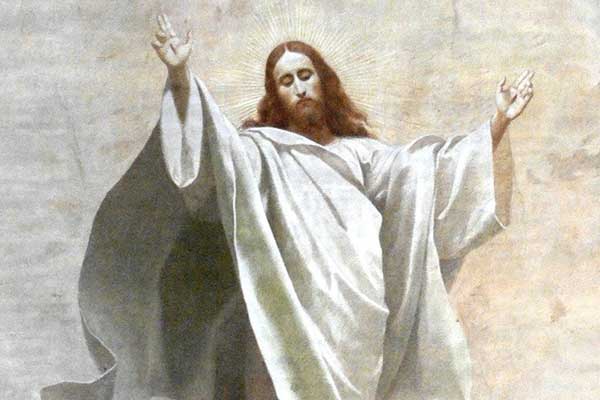
The Ascension marks the beginning of a 10-day period of prayer and reflection.
“It is not for you to know the times or dates the Father has set by his own authority. But you will receive power when the Holy Spirit comes on you; and you will be my witnesses in Jerusalem, and in all Judea and Samaria, and to the ends of the earth.’ After he said this, he was taken up before their very eyes, and a cloud hid him from their sight.” Acts 1:7-9, the Holy Bible, New International Version
The Christian holiday of Easter celebrates the resurrection of Jesus on the third day after his death. Once he had appeared to his closest followers that Sunday morning, he continued to make appearances and provide convincing proof that he was once again alive. On the 40th day after his resurrection he gave the final instructions quoted above to his followers and then went up into heaven. Christians today observe this event as the Ascension of Jesus.
The Ascension marks the beginning of a 10-day period of prayer and reflection during which the disciples waited for a sign, a gift promised by Jesus before he left: “John baptized with water, but in a few days you will be baptized with the Holy Spirit” (Acts 1:5). This waiting time ended on the Pentecost, a Jewish holiday now adopted by Christians to observe the giving of the Holy Spirit.
History of Observance
Ascension was possibly observed by early Christians in conjunction with Easter and Pentecost (which follows ten days later) as being part of the resurrection event begun on Good Friday (Jesus’ sacrificial death) and concluded with Pentecost (the giving of the Holy Spirit). Since at least the 5th century, it has been observed as a separate feast day of prayer and reflection.
Catholics observe Ascension by praying the Novena (nine days of prayer) between Ascension and Pentecost. This prayer requests the gifts of the Holy Spirit and the fruits of the Holy Spirit. Other interesting traditions surrounding this holiday include a procession to the altar with a standard bearing a lion at the front of the line and a standard bearing a dragon at the tail of the line, which symbolizes the victory of Jesus over Satan. Some churches elevate a statue of Jesus at the front of the room, sometimes going so far as to physically raise it up during the service.
Significance
In terms of church attendance, observation of the Ascension pales among the other Easter related holidays. Perhaps the idea of watching Jesus ascend into heaven seems less essential than the moment he returned to life after three days in a tomb. Perhaps a Thursday in May is simply a less convenient time than Easter Sunday to get away from spring bustle, between school, sports, work, and general spring fever.
Whether at church or simply in one’s personal meditation space, the Ascension of Jesus remains an important moment for Christians to commemorate, because it reminds us to pause and reflect Jesus’ holiness. Jesus, the man who claimed to be God but died on a Friday, proved his claim when he conquered death and returned on Sunday to walk among the living. He stayed with his followers another 40 days, teaching them and establishing their marching orders for post-Resurrection times. And when his instructions were complete, they saw him go back into the heavens as further evidence supporting his claim.
Jesus’ earthly ministry concluded that day, but his work had just begun. The waiting followers were passed the mantle of earthly leadership of his ministry, along with a gift (to arrive 10 days later) to guide them in their journey: an inner counselor, the Holy Spirit.
